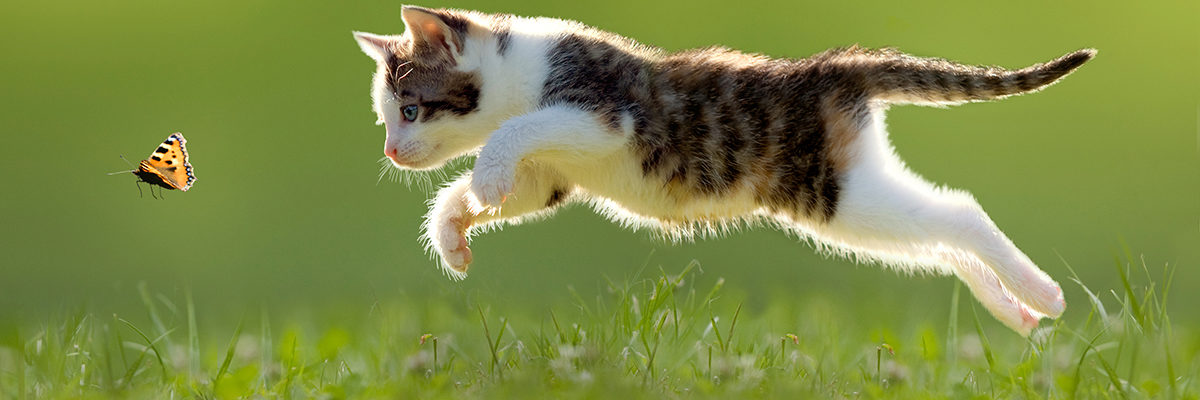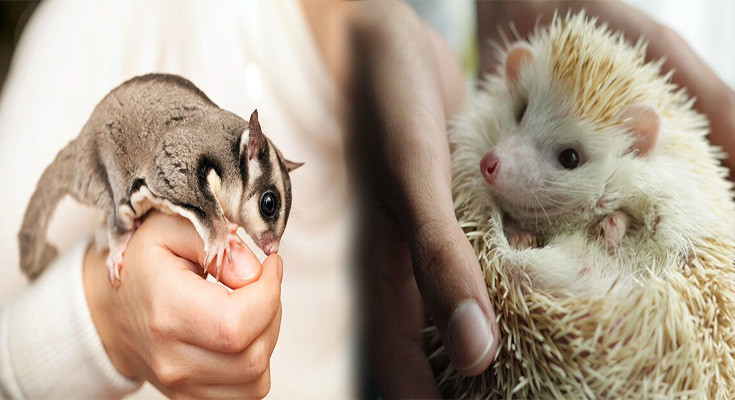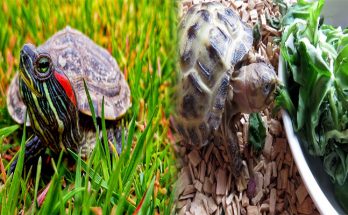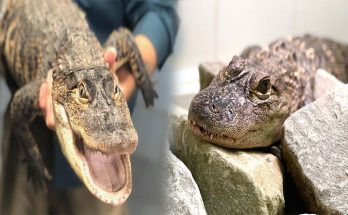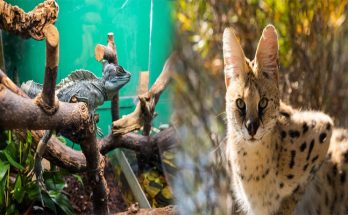Exotic pets can be great for people who have a lot of time to dedicate to their animal’s care. They’re often very cute and friendly, but they also require a lot of care and attention. If you’re thinking about getting an exotic pet, it’s important to research how much upkeep the animal requires before making a final decision.
Sugar glider
Sugar gliders are small marsupials with a pouch, and they are known for being social animals that enjoy living in pairs. They’re also active during the day and night, so you’ll want to make sure your sugar glider has plenty of space to roam around.
Sugar gliders can be trained to use a litter box or harness if you have patience! They don’t like being handled much (that’s why they’re called “pocket pets”), but if you do want to hold one while it’s awake, just make sure not too many people are around because sugar gliders will get stressed out easily when they’re scared or overwhelmed.
If you’re interested in having one as an exotic pet but aren’t sure how much work goes into caring for them yet? Check out this article: http://www3b1b6f0ca6a7c8d26cb3ff7f6e2dd94e-wpengine
Golden hamster
Golden hamsters are easy to care for and handle, making them a great choice for new pet owners. They are social, friendly and easy to handle (although they should not be handled by children under 8 years old). These little guys are also active and playful.
They have a lifespan of 2-3 years in captivity, which means you’ll only have to wait another year before you can get another one if your first golden hamster passes away! I know that sounds morbid, but it’s true: hamsters live so long that you could have several generations living under one roof! You might even see some babies running around before long!
Goldens sleep during the day so don’t expect them awake unless it’s dark outside or they’ve woken up early; they don’t require much sleep at all–they’re nocturnal creatures after all!
Red-eared slider turtle
The red-eared slider turtle is a popular aquatic pet that can live for up to 40 years. They’re native to North America, but they now inhabit many areas around the world. They can grow up to 10 inches long and weigh up to 2 pounds as adults, although they’re usually smaller than that when you buy them from a pet store or breeder.
Red-eared sliders are easy to care for if you have all of the equipment they need: an aquarium with at least one foot of water depth (more if your turtle grows larger), land area in which it can bask in sunlight, filtration system keeping their water clean, food bowl filled with pellets or insects every day–and most importantly–a tank mate! Red-eared sliders are social animals who like company when possible; so if yours doesn’t have another turtle friend yet then make sure you get one soon after purchasing this reptile because otherwise it will be lonely without anyone else around who understands what it’s going through!
Chinchilla
Chinchillas are rodents, and they are nocturnal. They are social animals that live in colonies of up to 20 chinchillas, although the average colony is about seven or eight members. Chinchillas have fur that is similar to a rabbit’s, but it is softer and more luxurious.
Chinchilla fur has been used for coats, hats and jewelry since colonial times; today it’s also used in clothing lining and interior decorating (think: plush pillows). There are several species of chinchilla; the most common one found as pets is called Lepus variabilis variegatus–also known as “varying hares”–and comes from South America’s Andes Mountains region where temperatures can drop below freezing at night during winter months!
Bearded dragon
Bearded dragons are native to Australia and are omnivores. They can live up to 20 years and grow up to 2 feet long, so they require a large enclosure that mimics their natural environment. Bearded dragons eat insects, fruit and vegetables, but they also enjoy eating dead bugs (yum!).
Egyptian tortoise
The Egyptian tortoise is a good choice for new reptile owners, as they are easy to care for. They can live up to 100 years and spend most of their time in the water. These reptiles can be kept in outdoor enclosures, making them ideal pets if you live in an area that has warm days and cool nights.
Exotic pets often require a lot of care and can be quite expensive.
Exotic pets are often more expensive than traditional pets. They may require special care and attention, which can be costly. Some exotic animals are illegal in certain places, so you’ll need to check the laws where you live before getting one. And lastly, there are some species of animal that are dangerous to humans or other animals–and even when they’re not dangerous, they may still require special handling skills on your part.
I’ve always been interested in exotic pets, but I’m not sure I could handle the responsibility of taking care of one. They require a lot more attention than regular pets do and they can be quite expensive. That said, if you have the time and money to spare then these animals might be right up your alley!

